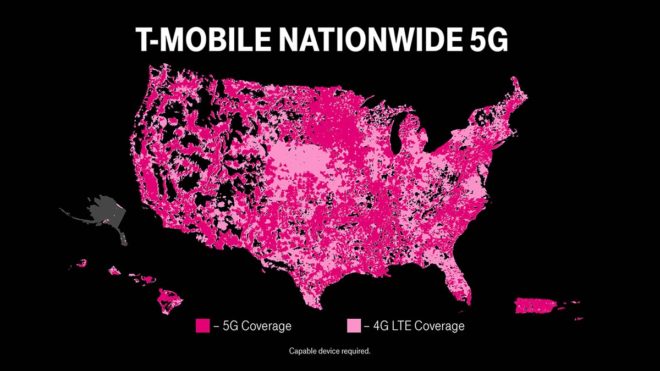T-Mobile standalone 5G launch expands 5G coverage by 30 percent

After teasing its upcoming standalone 5G rollout a few months ago, T-Mobile today officially flipped the switch.
T-Mobile’s standalone 5G network is now live, and the carrier touts that it’s the “world’s first nationwide standalone 5G network.” By activating standalone 5G, T-Mobile has increased its overall 5G coverage by 30 percent, with the 5G network now reaching nearly 250 million people in more than 7,500 cities and towns across 1.3 million square miles.
In addition to that expanded coverage, standalone 5G can help to bring lower latency. T-Mobile touts that in areas with standalone 5G, its engineers have already seen up to a 40% improvement in latency during their testing.
Standalone 5G means that the 5G signal doesn’t need to be anchored to 4G LTE like non-standalone 5G does. With T-Mobile, its 600MHz 5G has been combined with mid-band LTE but that means that the 600MHz 5G can only reach as far as the mid-band LTE signal. The rollout of standalone allows the 600MHz 5G to reach farther than the mid-band signal.
Today T-Mobile is updating a few of its devices to enable them to access its new standalone 5G coverage. The Galaxy S20, Galaxy S20+, and Galaxy S20 Ultra are all receiving updates today to enable standalone 5G, and the OnePlus 8 is also receiving an update to turn on standalone.
T-Mobile confirmed to TmoNews that it plans to enable standalone 5G on the Galaxy Note 10+ 5G, Galaxy A71 5G, OnePlus 7T Pro 5G McLaren, and LG V60 ThinQ 5G as well.

Source: T-Mobile
